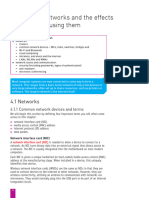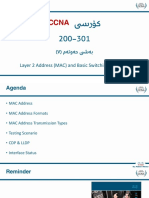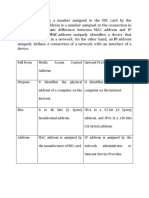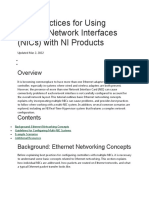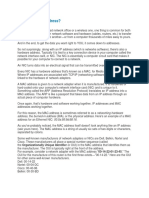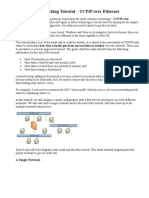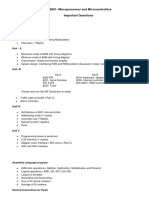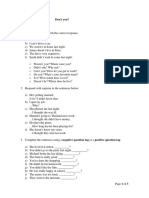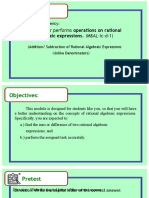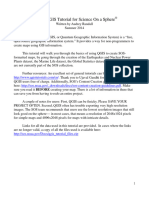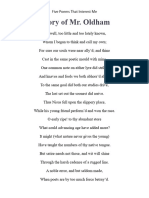0% found this document useful (0 votes)
28 views18 pagesAccess Ma C
The document discusses the Media Access Control (MAC) address, which uniquely identifies network devices and consists of a six-byte hexadecimal number. It covers the classification of MAC addresses, their communication processes within and across networks, and the role of Logical Link Control (LLC) in ensuring error-free data transfer. Additionally, it explains MAC cloning, its purposes, and methods for changing a MAC address.
Uploaded by
Huriza TahirCopyright
© © All Rights Reserved
We take content rights seriously. If you suspect this is your content, claim it here.
Available Formats
Download as PDF, TXT or read online on Scribd
0% found this document useful (0 votes)
28 views18 pagesAccess Ma C
The document discusses the Media Access Control (MAC) address, which uniquely identifies network devices and consists of a six-byte hexadecimal number. It covers the classification of MAC addresses, their communication processes within and across networks, and the role of Logical Link Control (LLC) in ensuring error-free data transfer. Additionally, it explains MAC cloning, its purposes, and methods for changing a MAC address.
Uploaded by
Huriza TahirCopyright
© © All Rights Reserved
We take content rights seriously. If you suspect this is your content, claim it here.
Available Formats
Download as PDF, TXT or read online on Scribd
/ 18















